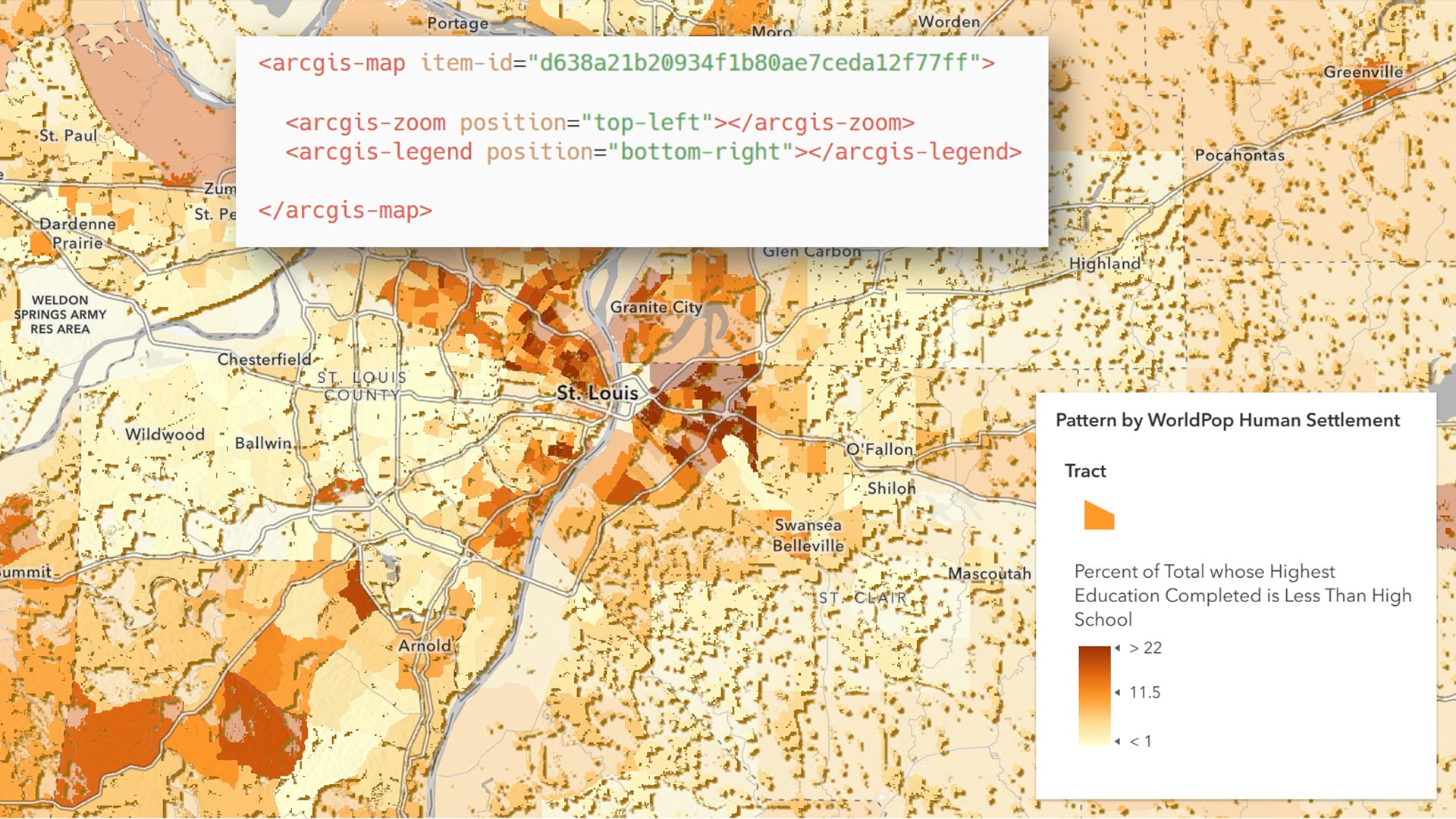Recently, I was asked which specific skills are essential for a GIS manager to excel. Not just general management capabilities, but skills that are uniquely critical to the job of GIS manager. Leadership? Political influence? Strategic thinking? All are essential skills for a manager. But are they unique to the GIS profession?
GIS managers have responsibilities that extend well beyond merely overseeing technology; they are essential in influencing how organizations leverage geospatial data to enhance decision-making and foster innovation. The most accomplished GIS managers navigate intricate team dynamics and align GIS initiatives with overarching business objectives. Their skill set goes far beyond the technical ins and outs of software.
With that in mind, here are seven distinct skills that every GIS manager needs to thrive in this challenging role.
1. Understanding the Capabilities of Modern GIS
Today’s GIS platforms are incredibly versatile. They build upon legacy mapping as well as spatial data management software, and incorporate modern capabilities such as live data feeds, workflow automation, and artificial intelligence for predictive analysis. They also provide spatially infused insights on all manner of mobile and web-based devices. If you don’t understand these capabilities, you risk missing out on opportunities to help your organization solve problems and meet its objectives.
Imagine this: You’re a GIS manager at a mid-sized city’s planning department. A team member approaches you with an idea to use GIS to track real-time traffic patterns and predict congestion during rush hour. But what if you’re still thinking of GIS as a tool for making zoning maps, not as a dynamic system capable of integrating live data streams? You dismiss the idea, assuming it’s too complicated or expensive.
A month later, you find out that a neighboring city implemented this very solution, and is being celebrated for reducing commute times. Meanwhile, your city is stuck fielding complaints about traffic bottlenecks.
By understanding what’s possible with modern GIS, you can lead your team to innovate and proactively tackle challenges rather than playing catch-up. Plus, staying informed keeps you ready to respond when decision-makers ask, “Can GIS help with this?” Instead of scrambling for answers, you’ll confidently say, “Yes—and here’s how.”
2. Articulating the GIS Value Proposition
To secure buy-in and build support for GIS initiatives, a GIS manager must be able to articulate its value clearly. That means explaining, specifically, how GIS contributes to the goals of your organization. As a GIS manager, you know GIS is valuable, but if you can’t explain its impact in terms that resonate with decision-makers, your message gets lost. Leaders don’t care about geospatial lingo—they care about results.
Let’s say you’re a GIS manager at a utility company, and your team just developed a tool which uses GIS to predict equipment failures. It’s cutting-edge stuff that could save the company hundreds of thousands of dollars in repairs and downtime. You’re excited to share it with leadership, so you walk into a meeting, fire up your presentation, and start talking about spatial modeling, predictive algorithms, and data layers.
Fifteen minutes in, you notice your audience members checking their phones or looking confused. Then someone interrupts: “This sounds interesting, but how does it help us hit our bottom line?”
As a GIS manager, you have to bridge the gap between technical capability and business value. Executives don’t want to know how the magic happens—they want to know why it matters. Instead of focusing on technical details, you could say, “Using GIS, we can predict which assets are at risk of failure, allowing us to plan maintenance proactively. This reduces emergency repair costs by 30 percent and minimizes service disruptions for customers. It’s a win for the budget and our reputation.”
Now you’ve got their attention. You’ve articulated the GIS value proposition.
3. Managing the All-In Cost of GIS Systems
The cost of GIS systems extends beyond the software itself, encompassing hardware, licensing, data acquisition, staff training, and ongoing maintenance.
Of course, this is not unique to GIS. All information systems have multiple components comprising their all-in cost (or total cost ownership). But as GIS manager, you’re expected to be the most familiar with the costs pertaining to GIS systems and related geospatial services. It’s not a small task, considering the breadth of capabilities and integration points of modern GIS systems.
Consider the following key questions to ask yourself:
- Have you accurately estimated how many users will need access and at what level to avoid unexpected licensing costs?
- Do you have sufficient infrastructure to support CPU-intensive workloads? What about training for staff?
- Are your people sufficiently trained to leverage and support our portfolio of geosolutions?
If you’re not on top of these factors, you risk blowing your budget and losing credibility with leadership. But if you do your homework—by asking tough questions, planning for future needs, and mapping out total costs over the system’s life cycle—you’ll not only avoid unpleasant surprises, but also make a solid case for GIS investments.
Understanding and managing costs isn’t just about keeping the budget in check—it’s about showing you’re a strategic thinker who knows how to make GIS work and make it worth the money.
4. Understanding How GIS Integrates with Other Systems
In most organizations, GIS tools and systems fit into a broader ecosystem of enterprise systems, such as enterprise resource planning (ERP), customer relationship management (CRM), and asset management platforms. GIS also straddles the world of data analytics and interoperability systems. These systems collectively support workflows that span multiple departments or lines of business. It’s critical that a GIS manager be conversant in these systems and the key GIS integration points that support end-to-end processes. This can avoid the inefficiencies resulting from siloed systems and data.
Imagine developing a GIS app for a municipality’s emergency response program that isn’t integrated with its dispatch system. Your app might do a great job of mapping out road closures, evacuation zones, and shelter locations—everything first responders need during a disaster. But when a storm hits, and first responders try to use the system, you could inadvertently create chaos as dispatchers are forced to spend a lot of time manually copying updates back and forth between systems. When time is of the essence, these inefficiencies can be costly.
As a GIS manager, it’s not enough to just know GIS—you need to understand how it connects with the tools your organization already relies on. This ensures GIS isn’t just another standalone tool but a core part of your organization’s success.
5. Building a GIS Team
A successful GIS program depends on having the right team in place. A GIS manager needs to understand the various roles involved and pathways to developing the necessary, unique skills.
Imagine a company that decides to leave GIS team building to a general manager with no GIS experience. The company approaches this like any other department: hire a few tech-savvy people, give them some software, and expect results. But soon, the cracks start to show.
The general manager hires an IT specialist to manage the GIS database. However, that person doesn’t understand spatial data structures or projections. Critical analysis workflows break down. Then, the manager hires a graphic designer to create “maps that look good.” However, the designer doesn’t understand geospatial analysis or how to derive meaningful insights from data. Finally, they assign a data analyst to the team who’s great with numbers but struggles to integrate nonspatial data into GIS workflows.
The result? A fragmented team with mismatched skills, inefficient workflows, and frustrated employees.
GIS is a unique field that blends spatial thinking, technical expertise, and domain-specific knowledge. A GIS manager needs to understand this complexity and build a team capable of handling it. In short, a GIS manager knows that GIS isn’t just another IT function or analytical discipline—it’s a specialized field with its own challenges and opportunities.
6. Managing and Governing Geospatial Data
GIS systems rely on high-quality data, making data governance a critical responsibility for GIS managers. This includes establishing policies for data accuracy, security, access, and compliance with legal and ethical standards. Effective data governance ensures that GIS data remains a reliable and trustworthy resource for decision-making.
Because geospatial data is tied to coordinate systems and projections, and often comes from multiple sources with varying formats and accuracies—public records, satellite imagery, IoT sensors, and more—integration can be a more complex task.
Geospatial data is also highly dynamic. Land use changes, infrastructure evolves, and real-time data streams provide updates every second. Governance for geospatial data must address temporal accuracy, ensuring that datasets are up-to-date and historical versions are archived for comparison. Ordinary data governance often focuses on static records, with far less emphasis on managing temporal elements.
Managing this data means more than just filing it away. You need processes for version control, metadata documentation, quality assurance, and access permissions. Geospatial data governance is about ensuring that GIS data is accurate, consistent, secure, and properly managed. As a GIS manager, you’re the gatekeeper of your organization’s most valuable spatial asset—its data.
7. Tracking the Direction of the GIS Industry
The GIS industry is continuously evolving, influenced by emerging technologies like artificial intelligence, augmented reality, and real-time data integration. A GIS manager must stay informed about these trends to anticipate future needs and guide the organization in adopting innovations that enhance GIS capabilities.
Failure to track these trends can lead to decisions that lock your organization into outdated technologies or workflows. Worse, you may miss opportunities to solve problems in innovative ways that stakeholders now expect. On the flip side, staying informed about the industry allows you to proactively introduce solutions that can make your organization a leader.
Let’s say you manage a team that supports the tools and workflows you’ve been using for years. Then, one day, another department asks if they can start using GIS for something like real-time tracking of mobile crews or predictive analytics for infrastructure maintenance. Your chief information officer (CIO) comes to you asking about porting your on-premise systems to a cloud-based platform to take advantage of elastic, utility-based scaling. Is your GIS cloud-ready? You might not be sure how to make them happen or if they’re even feasible.
That’s the risk of not staying tuned in to where the GIS industry is heading. If you don’t keep up with these trends, you could be caught flat-footed when someone expects you to deliver. Decision-makers might look outside your team for solutions, leaving GIS out of critical projects.
Staying informed keeps you ahead of the game. When someone asks about cutting-edge technology, you can tell them you’re already on it. In this way, you’re not just managing GIS—you’re shaping how your organization uses it to solve problems and
drive innovation.
Wrapping Up
Being a GIS manager is about much more than maps—it’s about strategy, leadership, and making GIS a critical part of your organization’s success. From understanding the latest GIS capabilities and communicating their value to managing costs, building the right team, and staying ahead of industry trends, the role requires a unique mix of technical know-how and big-picture thinking.
Becoming an expert in these skills isn’t just good for the organization—it’s good for you, too! When you guide a GIS program that solves real problems, saves money, and drives innovation, you’re not just a manager—you’re a leader. In a field that’s evolving as quickly as GIS, that’s what every organization needs.


